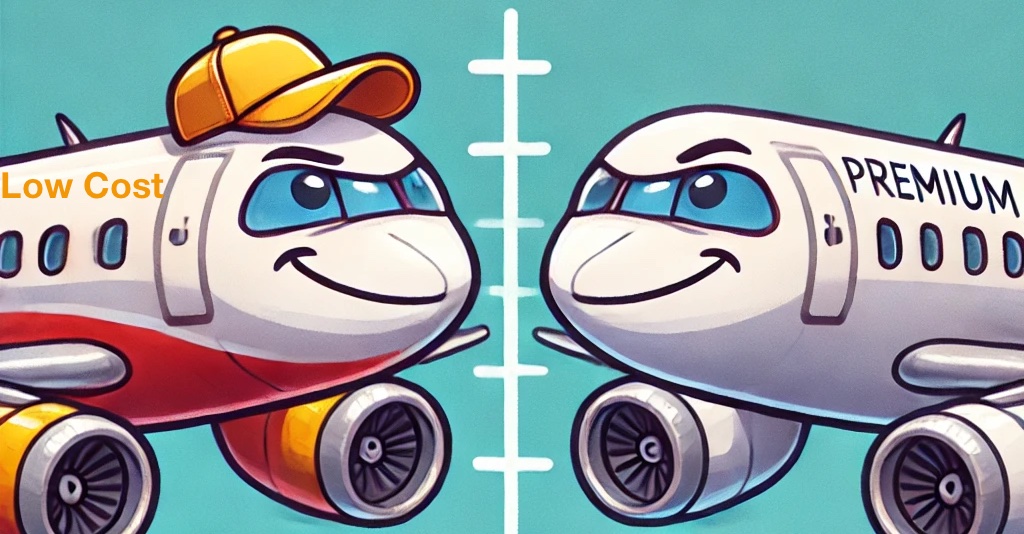I recently saw a LinkedIn post comparing low-cost airlines to premium carriers, implying that low-cost airlines are unsafe. The post featured a cartoonish image of an aircraft, clearly from a low-cost airline, covered in duct tape, alongside a well-maintained aircraft from a classic airline. First, let’s clear up a common misconception: there’s no “duct tape” in aviation—it’s called speed tape, and it’s a completely different grade and comes at a much higher price.
Beyond the clichés and humor, the comparison is simply wrong. Here’s a basic principle: aviation regulations make no allowances based on an airline’s business model. Low-cost carriers follow the exact same regulations as any other airline. This includes all safety-relevant aspects of operation, from aircraft certification, operating hours, crew-to-passenger ratios, safety equipment, licensing, medical standards, training, and so on. In terms of safety, all airlines play by the same rules—period.

Low-cost airlines have a different business model, focused on cutting costs commercially, not in safety. You want to choose your seat? Pay extra. You want to check your luggage? Pay extra. You want a drink or food? Pay extra—well, in fairness, many “premium” airlines have adopted this model too nowadays. Flexibility? Pay extra… you get the idea.
Low-cost carriers also differ in policies for cancellations and rebooking. Historically, they pioneered remote booking systems, first by telephone and later online. Today, they operate entirely online—no ticket counters, no deals with travel agencies, just a straightforward, no-frills selling system. None of this, however, compromises safety.
Another area of difference is alliances and loyalty programs for frequent flyers. With low-cost airlines, it’s simple: they don’t offer them. Low-cost carriers generally sell direct, point-to-point flights. Want a connecting flight? You’ll need to collect your luggage and check it in again yourself.
Is this bad? No. You get what you pay for and should manage your expectations accordingly. But none of this impacts safety. This isn’t where low-cost airlines cut costs. While I personally feel a bit awkward when flight attendants sell lottery tickets or scratch cards, I regularly fly with low-cost airlines without any safety concerns.
Ultimately, the best way to assess safety is with data. Ryanair is the largest aircraft operator in Europe, with easyJet close behind, and with Wizz Air in the mix, low-cost traffic is a significant part of aviation in my region. And how many aircraft have they lost to accidents? Zero. Longevity doesn’t lack here either—Ryanair has been flying for 40 years, easyJet turns 30 in 2025, and Wizz Air was founded in 2004. Shady safety practices simply wouldn’t go unnoticed for this long.
This record is impressive, especially considering that most major airlines have had accidents, which doesn’t necessarily indicate poor safety standards. Airlines like Emirates, Swiss, Air France, and Malaysia Airlines have all had accidents in recent history.
One can question the business model of every airline and this is ok. But not on the basis of safety.
Leave a Reply